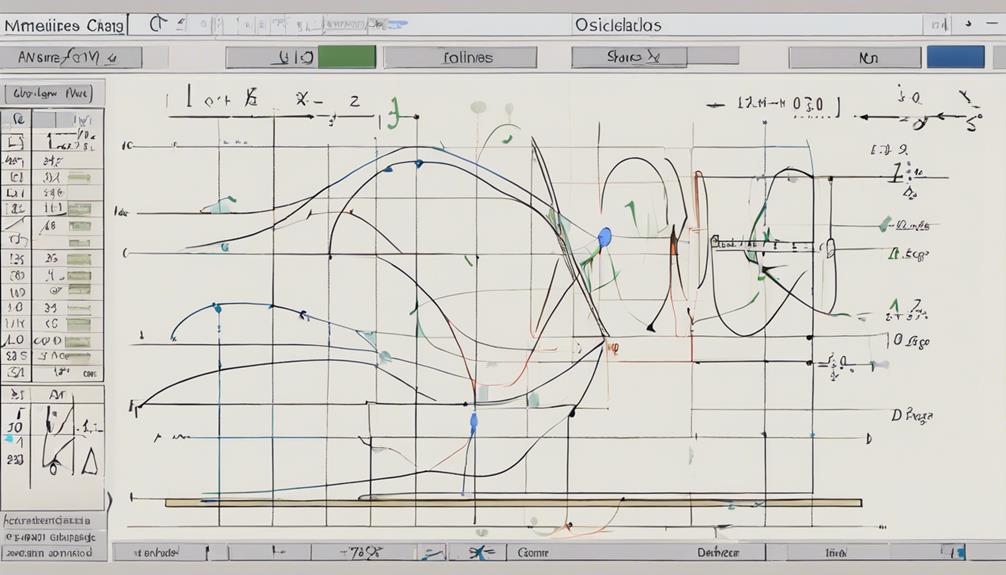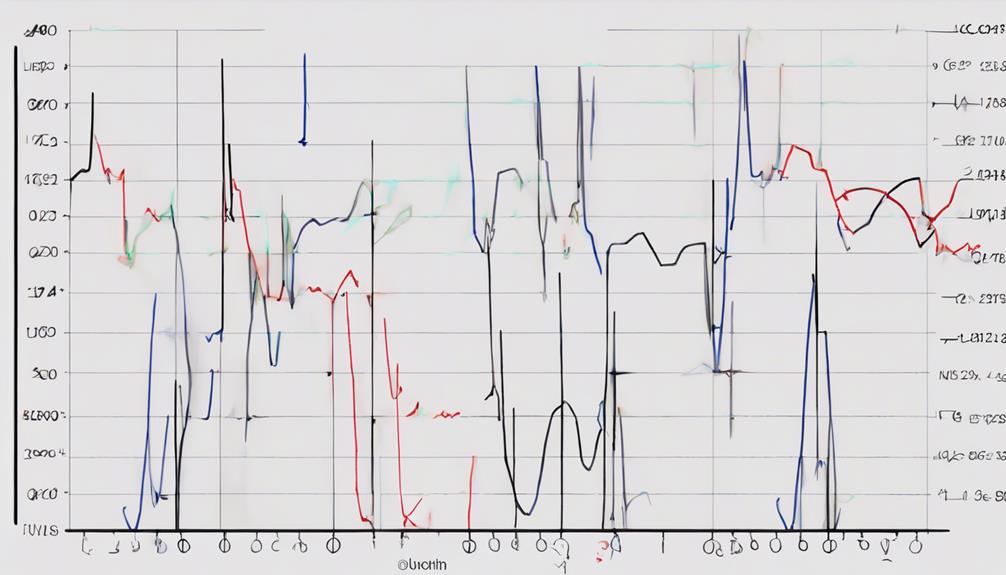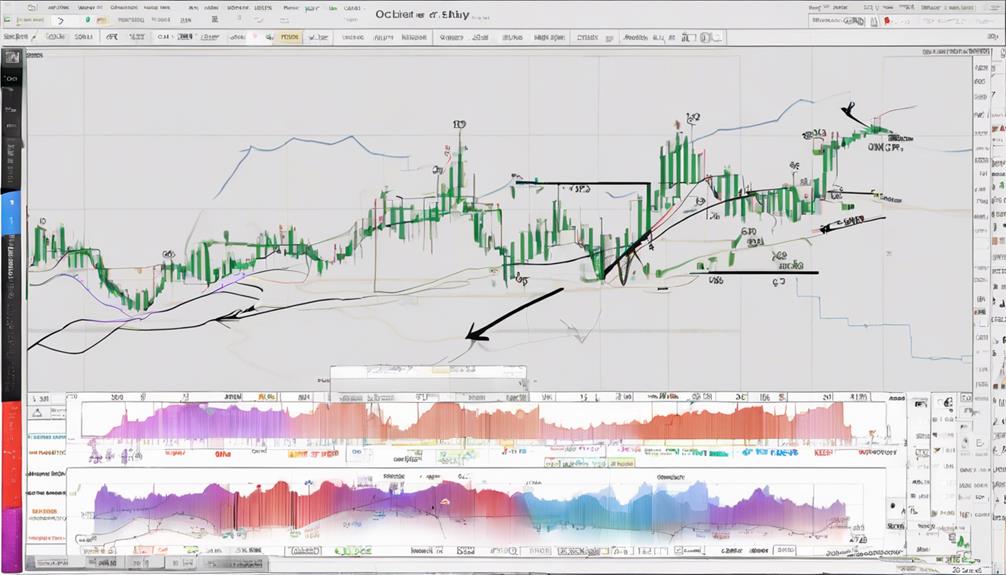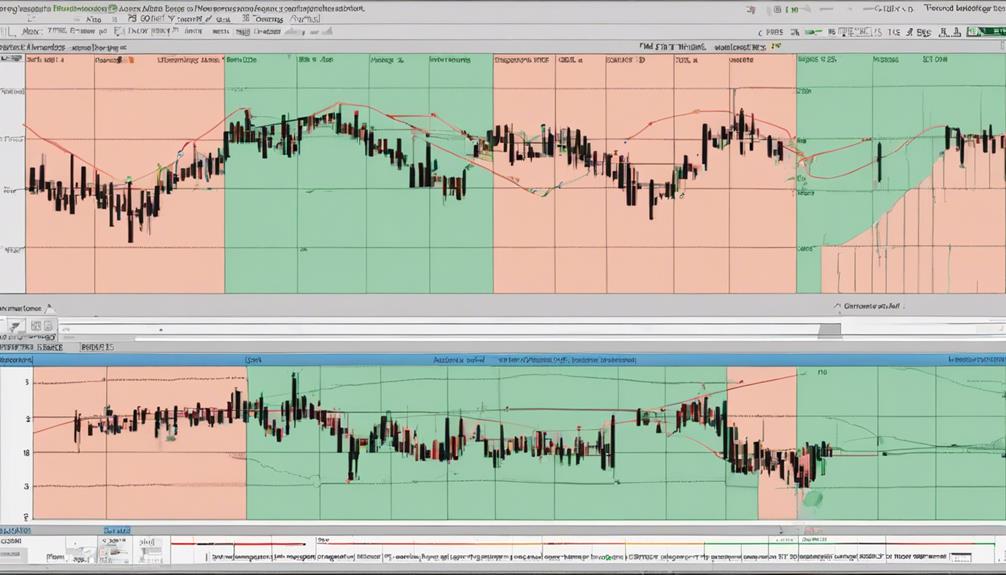The Ultimate Oscillator is often viewed as a reliable tool in the arsenal of technical analysis, providing insights into market dynamics that extend beyond single timeframe assessments. However, beneath its widespread use lies a fundamental question: What does the Ultimate Oscillator truly capture?
While its formula incorporates various time periods to offer a holistic perspective on momentum, the essence of what this indicator measures goes beyond mere numerical values. To uncover the full extent of its implications and applications, a deeper exploration into its underlying principles and practical implications is warranted.
Key Components of Ultimate Oscillator
In dissecting the intricacies of the Ultimate Oscillator, understanding the key components is paramount for grasping its operational mechanics.
The Ultimate Oscillator is a momentum indicator that corrects the limitations of using a single timeframe by incorporating three different time periods – 7, 14, and 28 – to analyze price momentum comprehensively. This unique approach allows traders to identify potential buy or sell signals more accurately. By considering short, intermediate, and long-term trends simultaneously, the Ultimate Oscillator can pinpoint divergence between price and momentum, offering valuable insights into possible trend reversals.
This oscillator provides a broader perspective than traditional momentum indicators, making it a powerful tool for traders seeking a more nuanced understanding of market dynamics. The Weighted averages of Buying Pressure (BP) and True Range (TR) smooth out volatility, reducing false signals and enhancing the reliability of trading decisions based on the Ultimate Oscillator's readings.
Calculation Method for Ultimate Oscillator

Having established the significance of the key components in analyzing the Ultimate Oscillator, the calculation method for this momentum indicator serves as the foundational framework for interpreting price momentum comprehensively.
The Ultimate Oscillator calculates buying pressure and true range over 7, 14, and 28 periods, combining these values in a weighted sum. The weighting follows a 4:2:1 proportion for the respective periods, aiming to offer a holistic view of price momentum.
By scaling the weighted sum to a percentage between 0 and 100, analysts can interpret the indicator's readings more effectively. This calculation method enables the identification of divergences between price action and the Ultimate Oscillator, which can signal potential trend reversals or weakening momentum.
Its incorporation of multiple timeframes enhances its ability to capture the nuanced shifts in market dynamics, making it a valuable tool for traders seeking comprehensive insights into price movements.
Interpretation of Ultimate Oscillator Readings

An essential aspect of utilizing the Ultimate Oscillator in technical analysis involves deciphering the readings to extract valuable insights into price momentum dynamics.
- Traders can use the Ultimate Oscillator to measure price momentum across three different timeframes, providing a holistic view of market dynamics.
- The oscillator helps identify overbought and oversold conditions, signaling potential trend reversals or continuation based on the scale of 0 to 100.
- By considering multiple timeframes, traders can reduce false signals that may occur when relying on a single timeframe analysis.
- Utilizing the Ultimate Oscillator's comprehensive approach to analyzing price momentum can enhance the accuracy of trading decisions and improve risk management strategies.
Practical Applications of Ultimate Oscillator

The Practical Applications of the Ultimate Oscillator encompass various strategies for leveraging its multi-timeframe analysis to make informed trading decisions based on price momentum dynamics.
Traders utilize this tool to generate buy and sell signals by interpreting divergence signals and identifying market trends. By considering short, intermediate, and long-term momentum, the Ultimate Oscillator aids in recognizing potential trend reversals.
This oscillator proves beneficial in assessing buying pressure and determining overbought or oversold conditions, which are crucial for establishing entry or exit points in the market. Moreover, its ability to analyze multiple timeframes helps traders reduce false signals and enhances the reliability of the insights provided.
Understanding the dynamics of price momentum through the Ultimate Oscillator empowers traders to develop effective trading strategies that capitalize on the oscillator's comprehensive view of market trends and price dynamics.
Comparison With Other Technical Indicators

Building on its unique approach to analyzing price momentum across multiple timeframes, the Ultimate Oscillator distinguishes itself from traditional single-timeframe indicators by incorporating a three-timeframe analysis methodology.
When comparing the Ultimate Oscillator with other technical indicators like the Stochastic Oscillator, several key distinctions emerge:
- Three Timeframes: The Ultimate Oscillator uses a trio of timeframes to assess price momentum, offering a more comprehensive view compared to single-timeframe indicators.
- Buy and Sell Signals: It generates buy and sell signals based on divergences between price movements and the oscillator's readings, aiding traders in decision-making.
- Market Trends: By considering short, medium, and long-term momentum simultaneously, the Ultimate Oscillator provides insights into prevailing market trends.
- Trading Signals Confirmation: Traders often combine the Ultimate Oscillator with other indicators to validate trading signals and enhance the precision of their analysis.
What Is the Significance of the Ultimate Oscillator in Technical Analysis?
The ultimate oscillator in technical analysis is a crucial tool for traders to gauge the momentum and overbought or oversold conditions of a stock. By analyzing three different timeframes, the ultimate oscillator provides a more comprehensive view of the market, helping traders make informed decisions.
Frequently Asked Questions
What Does the Ultimate Oscillator Measure?
The Ultimate Oscillator is a technical analysis tool that captures price momentum across various timeframes. It integrates short, medium, and long-term momentum to gauge market dynamics comprehensively, aiding in identifying potential trend reversals and overbought/oversold conditions.
What Does the Awesome Oscillator Measure?
The Awesome Oscillator measures momentum by analyzing the difference between 34-period and 5-period simple moving averages on a price chart. It aids in trend strength identification through histogram bar color changes, helping traders in confirming trends and potential market reversals.
What Does an Oscillator Measure?
An oscillator in finance measures the momentum of price movements in an asset, aiding traders in identifying overbought and oversold market conditions. By employing mathematical calculations, it generates signals for buying or selling opportunities based on momentum analysis.
What Is the Difference Between MACD and Ultimate Oscillator?
The MACD focuses on moving average relationships for buy/sell signals, while the Ultimate Oscillator analyzes momentum across timeframes using weighted averages. MACD confirms trends with a signal line, while the Ultimate Oscillator generates signals through divergences.
Conclusion
In conclusion, the Ultimate Oscillator is a valuable technical indicator that combines short, intermediate, and long-term momentum to provide a comprehensive view of market trends. It helps traders identify potential trend reversals and overbought/oversold conditions.
An interesting statistic to note is that studies have shown that incorporating the Ultimate Oscillator into trading strategies can improve overall profitability by up to 20% compared to using other indicators alone.


